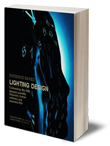Ever wonder what physiological and neurological effect your design decisions have on the people who live in the homes, work in the offices, or occupy the spaces that you design? Citing current evidence based research, Deborah will enlighten the A&D community to the consequences that their design decisions will have on the human body and brain. In this highly interactive, demonstration-filled 4 or 6 hour session, you will examine the dynamics of light and sound in a user- friendly format and learn how the body and  brain are uniquely designed to receive sensory and epigenetic design stimuli directly from the built environment. Using numerous anatomical references, cited research, and eye- opening audience demonstrations, participants will discover how and why environmental color, light, sound, and ambient temperature play an important role in human health and behaviors such as: enhanced work place performance and overall productivity, improved learning and cognition, and the most important factor in achieving overall human health …SLEEP!
brain are uniquely designed to receive sensory and epigenetic design stimuli directly from the built environment. Using numerous anatomical references, cited research, and eye- opening audience demonstrations, participants will discover how and why environmental color, light, sound, and ambient temperature play an important role in human health and behaviors such as: enhanced work place performance and overall productivity, improved learning and cognition, and the most important factor in achieving overall human health …SLEEP!
Ø Review the latest reports, research projects and evidence based studies into how environmental color, light and sound are emerging as key components for maintaining overall health and well being.
Ø Examine the connection our bodies have with natural daylight and learn how the newly discovered photo retinal receptors will have direct bearing on how we specify lighting for hospitality, healthcare, contract, education, retail and last ,but not least residential.
Ø Explore the paradox of why certain pigmented hues and colors of light elicit positive reactions while others are an emotional train wreck…is it really true that red excites??
Ø Discover how the brain uses environmental light, color, temperature and sound for key neurological functions and entrainment of biological rhythms as well as a means for : orientation and way finding, pattern recognition, stress relief, and motion detection
Ø Review interior light and nose levels recommended for human performance and discover how your design specifications can dramatically hinder or enhance the body’s inherent need for a sensory balance between the two
Ø Discover the differences between the way men and women process interior light and sound stimuli and how aging affects perception, reception, and resulting behaviors and why it’s important for the design professional to know.
Ø Learn how the brain & body receives, perceives, and processes various interior environmental conditions and then translates that into behavior leading to: increased sales, enhanced performance, workplace productivity, job and patient satisfaction, and… sleep!
Ø Explore why the metabolic process of SLEEP is emerging as a driving force responsible for active learning, memory consolidation, and obesity propensity…. and how the built environment and natural products such as wool can support this basic human function.
Ø With simple graphics and colorful charts, audiences will get a personal understanding of the circadian system and how the homeostasis of the body is directly linked to SLEEP with environmental LIGHT serving as a driving force
Ø Citing recent scientific and medical research, audiences will discover how the body’s need for cyclic light, darkness and temperature throughout the day is a requirement for nighttime sleep and also learn of specific design interventions to support this process.
Deborah Burnett 2009 © Copyright
 This course is approved for health, safety and welfare credits
This course is approved for health, safety and welfare credits




